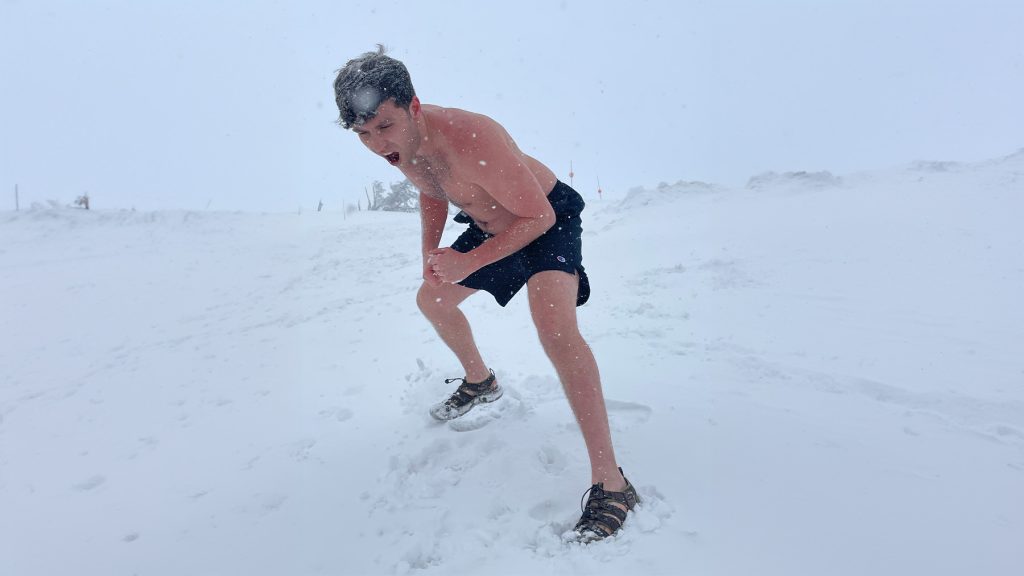So if you all have been reading my blog posts you should understand that the best way to recover from chronic injuries – including tendinitis, ligament tears, impingements, plantar fasciitis, etc. – is to do something called cold/heat contrast training. You may have experienced something like this in the physical therapist office, using ice packs and heat packs, but I promise you the methods I will show you are 1000 times more powerful because they work the cardiovascular system of the entire body.
The cardiovascular system is responsible for delivering blood, oxygen and nutrients to every cell in the body – especially and including the parts of your body that are injured. Its exactly these elements that will allow you to recover from your injuries. In addition to feeding your cells, the full body cold/heat contrast training also relaxes your nervous system – allowing for better sleep and thus recovery, dramatically reduces inflammation which is responsible for pain and chronic acting up of the injuries, and increases human growth hormone and dopamine allowing for quicker recovery. Your body essentially goes into hyper-performance mode – and is optimized for recovery.
There are multiple levels of cold/heat contrast training – however I would like this article to be for beginners, so we will only focus on cold/hot showers to start. Future articles will cover ice baths and sauna, and wild nature cold exposure; however for now we’ll simply start with the basics.
Cold/hot contrast showers
This is the best place for a beginner to start because not only is it easier for your body to handle, but it also requires zero equipment (besides having a shower). The other benefit to doing this training in the shower is that you can move around, which can help to bring body heat and combat the difficulty of taking a cold shower.
The way you would start hot/cold showers is simple.
- First get in the shower and turn it hot. Allow your body to relax, feel your muscles loosen up, take deep breaths and enjoy the moment. Prepare your body for the cold which will come next, gently swaying in the shower, moving your arms, gently shaking your legs and taking slow deep breaths.
- When you feel ready, turn the shower all the way cold. The first time you do this it will be very difficult, but as you gain practice it will soon become easier. When you’re in the cold part of the shower, make sure to maintain slow deep breaths and gentle movements of your body. Aim to stay in the shower for 1 minute your first time – eventually working your way up to 5 minutes or more.
- After you can’t stand the cold any longer, turn the shower back hot and fully relax. Allow your body to fully warm up again. This is very important as you do not want to overdo the cold. Depending on how difficult the cold shower was for you, it may take 1-3 minutes or it may take longer. It’s ok to stay in for as long as you need. Resume taking slow deep breaths and gently swaying your body.
- After fully warming up, turn the shower all the way cold again. Practice the same principles you did your first time in the cold, using your breath to stay calm and gently sway your body to increase body heat. Try to stay in for as long as you can – aiming for at least 1 minute.
- This time DO NOT turn the shower hot. The get the maximum benefits of cold/hot showers it’s best to end the shower cold. This will force your body to warm up naturally and thus you will get more of the dopamine and adrenaline systems which will be activated by the cold. Get out of the shower, dry off and then warm up naturally by moving your body – you can dance, do some exercises that you like to do, or put on some clothes and take a walk (make sure to dry off fully).
Some important things to note about cold/heat contrast therapy. One of the primary aims of this kind of training is to increase your adrenaline and dopamine and thus increase your internal body temperature. So in contradiction, get really cold will actually increase your core body temperature (your body must do this to create homeostasis).
So if you are someone who is used to being calm or low energy, you will get the most of this training if you allow yourself to feel excited, or full of adrenaline. This is what will really stoke the internal fires and allow you to begin the road to recovery. This is a mindset that may be unfamiliary to you, however it’s essential to allow yourself to feel the adrenaline and the power that comes with this kind of training.
This mindset is also important for your recovery in general – defeat the injury, do not let it defeat you.


One Response